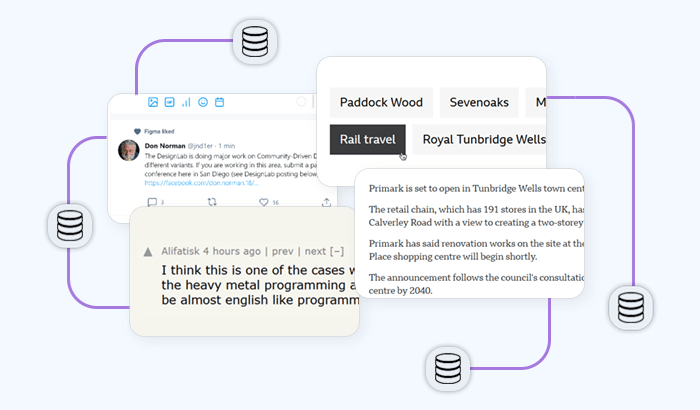

Every device on a network needs a way to reach the internet or other networks. The default gateway acts as this bridge, guiding traffic out of your local network. In this article, we’ll explain what a default gateway is, how it works, and why it’s essential for connectivity.
What Is a Default Gateway?
A default gateway is the device that connects a local network to external networks, usually the internet. It serves as the access point or router that networked devices rely on when they need to send data outside their own subnet.
Think of it as the exit door from your local network: if your computer wants to reach a website or a server that isn’t part of its immediate network, the traffic is directed to the default gateway, which then knows where to send it next.

Every device on a network is typically configured with three key pieces of information:
- IP Address – its unique identifier on the network.
- Subnet Mask – defines the size and range of the local network.
- Default Gateway – the path out of the local network toward other networks.
For example, in a home Wi-Fi setup, your router usually acts as the default gateway. When you open a website, your device doesn’t know where that site is located, but it knows to send the request to the router, which forwards it to the internet.
How Does a Default Gateway Work?

The default gateway acts as the traffic director for your network, ensuring that data finds its way beyond the local environment. When a device wants to communicate with another device outside its subnet, it forwards the request to the gateway, which then routes it appropriately. Here’s how the process works step by step:
1. Device checks the destination: If the destination IP address is within the same subnet, the device sends data directly to it. If the destination is outside the subnet, the device sends the data to the default gateway instead.
2. Gateway receives the packet: The gateway examines the packet and determines the best path to forward it.
3. Gateway forwards the packet: Using its routing table, the gateway sends the packet toward the destination, often to another router or directly to the internet.
4. Response returns via the gateway: Replies from the destination server travel back through the gateway, which then delivers them to the original device.
Example: When you type www.example.com into your browser, your computer sends the request to the default gateway (typically your router). The router forwards it through your internet service provider and across the internet until it reaches the web server. The response then flows back through the same gateway to your device.
Common Default Gateway Addresses
Default gateways are usually assigned well-known IP addresses, especially in home and small office networks. These addresses are easy to remember and fall within the private IP ranges reserved for internal use.
IPv4 Default Gateway Addresses
Some of the most common IPv4 gateway addresses include:
192.168.0.1– Often used by Netgear and D-Link routers.192.168.1.1– Common for Linksys, Cisco, and many ISP-provided routers.192.168.100.1– Frequently used in cable modem setups.10.0.0.1– Sometimes used by enterprise networks and certain ISPs (e.g., Comcast/Xfinity).
These addresses belong to private IP ranges defined by the Internet Assigned Numbers Authority (IANA):
10.0.0.0–10.255.255.255172.16.0.0–172.31.255.255192.168.0.0–192.168.255.255
Since they’re private, they can be reused across different networks without conflict.
IPv6 Default Gateway Addresses
With IPv6, gateways are often assigned automatically by the router using link-local addresses (starting with fe80::). Instead of typing them manually, devices typically obtain the IPv6 default gateway via Neighbor Discovery Protocol (NDP).
Private vs. Public Addresses
- A private gateway address (e.g.,
192.168.1.1) connects devices inside the local network. - The router then uses its public IP address (assigned by the ISP) to communicate with the wider internet.
Why Is a Default Gateway Important?
The default gateway may seem like just another number in your network settings, but it plays a central role in keeping your devices connected. Without it, your local network would be isolated from the outside world. Here are the main reasons it matters:
Internet Access
The most obvious function of a default gateway is to enable internet connectivity. It serves as the exit point for all traffic destined for websites, cloud services, or any external network.
Communication Between Networks
Beyond internet access, a default gateway allows devices on one subnet to talk to devices on another. This is especially important in corporate or campus networks, where different departments may operate on separate subnets.
Centralized Traffic Control
By directing outbound and inbound traffic through a single point, the gateway gives administrators greater visibility and control. They can apply firewall rules, monitor traffic, or prioritize certain types of data.
Security Enforcement
The default gateway is often the first line of defense against external threats. It can filter unwanted traffic, block malicious connections, and act as a barrier between the internal network and the open internet.
Network Services Integration
Gateways often handle additional services like DHCP (assigning IP addresses), NAT (network address translation), and VPN routing. These services streamline network management and enhance connectivity options.
Default Gateway vs. Related Networking Concepts
It’s easy to confuse the default gateway with other networking elements like routers, DNS servers, and proxies. Let's analyze the key differences:
| Concept | Definition | Primary Role | Key Difference from Default Gateway |
|---|---|---|---|
| Default Gateway | The access point that routes traffic from a local network to external networks. | Directs outbound traffic to destinations outside the subnet. | Without it, devices can’t reach the internet or external networks. |
| Router | A physical or virtual device that forwards data packets between networks. | Connects multiple networks together. | A router often acts as the default gateway, but it can serve many other functions too. |
| DNS Server | A server that translates domain names (e.g., example.com) into IP addresses. | Makes it possible to browse the web using human-readable names. | DNS resolves names; the default gateway forwards the actual traffic. |
| Proxy Server | An intermediary server between a client and another server. | Adds caching, filtering, or anonymity to web requests. | A proxy handles requests by policy; the gateway handles routing by default route. |
| Firewall | A security system (hardware or software) that monitors and controls network traffic. | Blocks or permits traffic based on rules. | A firewall enforces security policies, while the gateway directs traffic flow. |
Security Considerations

The default gateway is a critical point in any network, but it can also be a potential target for attackers. Properly securing your gateway helps protect both your devices and your data. Here are the key security considerations:
Change Default Passwords
Many routers and gateways come with default usernames and passwords, which are widely known and easy to exploit. Always set a strong, unique password to prevent unauthorized access.
Keep Firmware Updated
Manufacturers regularly release firmware updates to patch vulnerabilities. Keeping your gateway updated ensures it has the latest security protections.
Disable Remote Access
Unless necessary, turn off remote management features that allow access to the gateway from outside your local network. This reduces exposure to potential attacks.
Use Firewalls
Gateways often include built-in firewall capabilities. Enable these to filter unwanted traffic and block suspicious connections before they reach your devices.
Monitor Network Activity
Regularly check logs and network activity to detect unusual behavior. Early detection can help prevent breaches or mitigate damage.
Segment Your Network
In larger networks, using VLANs or separate subnets with controlled gateway access can reduce the risk of lateral movement if one segment is compromised.












